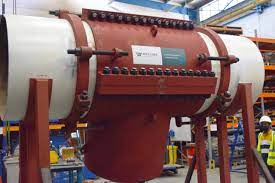Introduction
Hot Tapping is an innovative technique revolutionizing the way industries maintain and upgrade their pipelines. In essence, it involves making a connection to an existing pipeline while it is still in service. This method has gained immense popularity across various sectors due to its efficiency and ability to minimize downtime.
How Hot Tapping Works
Hot Tapping is a carefully orchestrated process that ensures a seamless connection to an active pipeline without interrupting operations. Specialized equipment, including tapping machines and fittings, is employed to create a secure connection point for further modifications.
Applications of Hot Tapping
Oil and Gas Industry: Hot Tapping finds extensive use in the oil and gas sector for adding new lines, installing monitoring equipment, and addressing maintenance needs without shutting down production.
Water and Utilities: In the water and utilities sector, Hot Tapping allows for the expansion of distribution networks and facilitates repairs without disrupting water supply to consumers.
Industrial Pipelines: Various industrial pipelines, transporting chemicals and other substances, benefit from Hot Tapping by enabling modifications without the need for a complete system shutdown.
Advantages of Hot Tapping
Cost-Efficiency: Hot Tapping proves to be cost-effective as it eliminates the need for complete shutdowns, reducing revenue losses associated with downtime.
Minimizing Downtime: The ability to make modifications while the pipeline is in operation significantly minimizes downtime, ensuring continuous productivity.
Environmental Impact: By reducing the need for pipeline shutdowns, Hot Tapping contributes to a more environmentally friendly approach by minimizing resource waste.
Challenges and Safety Measures
While Hot Tapping offers numerous benefits, it’s crucial to address potential risks. Rigorous safety measures, including thorough risk assessments and adherence to industry regulations, are essential to ensure the protection of personnel and the environment.
Hot Tapping vs. Traditional Methods
In comparing Hot Tapping to traditional methods, the former stands out for its efficiency and reduced impact on operations. Unlike traditional approaches that often require complete shutdowns, Hot Tapping allows for modifications with minimal disruption.
Choosing the Right Hot Tapping Service
When selecting a Hot Tapping service provider, it’s essential to consider factors such as experience, safety record, and adherence to industry standards. Different industries may have unique requirements, so choosing a provider with expertise in a specific sector is paramount.
Case Studies
Success Stories: Several industries have successfully implemented Hot Tapping, resulting in streamlined operations, reduced costs, and increased overall efficiency.
Real-World Applications: Case studies showcase the practical applications of Hot Tapping in diverse industries, providing insights into its adaptability and effectiveness.
Future Trends in Hot Tapping
As technology advances, Hot Tapping is expected to evolve with it. Innovations in materials, equipment, and methodologies will likely enhance the efficiency and applicability of this technique, meeting the ever-changing needs of industries.
Hot Tapping Service Providers
Key players in the Hot Tapping industry have proven track records in delivering reliable services. When choosing a service provider, businesses should consider factors such as reputation, expertise, and the ability to tailor solutions to specific needs.
Client Testimonials
Positive Experiences: Clients across industries share positive experiences with Hot Tapping, highlighting its impact on cost savings, operational efficiency, and overall satisfaction.
Testimonials from Various Industries: Diverse testimonials underscore the versatility of Hot Tapping, showcasing its success in meeting the unique challenges of different sectors.
Conclusion
In conclusion, hot tapping services have emerged as a game-changer in the maintenance and modification of pipelines across industries. Its cost-efficiency, minimal downtime, and positive environmental impact make it a preferred choice for businesses seeking efficient solutions to their pipeline needs.
FAQs
- What is Hot Tapping? Hot Tapping is a technique that allows the connection to an existing pipeline while it is still in service, enabling modifications without shutting down operations.
- How does Hot Tapping differ from traditional methods? Hot Tapping minimizes downtime by making modifications to a pipeline while it is still in operation, contrasting with traditional methods that often require complete shutdowns.
- Is Hot Tapping safe for all industries? Hot Tapping can be safe for various industries when strict safety protocols and risk assessments are followed to mitigate potential risks.
- What are the future prospects of Hot Tapping technology? As technology advances, Hot Tapping is expected to evolve with improved materials, equipment, and methodologies, enhancing its efficiency and applicability.
- How can businesses benefit from Hot Tapping services? Businesses can benefit from Hot Tapping through cost savings, reduced downtime, and a more environmentally friendly approach to pipeline maintenance…
Applications of Hot Tapping
Oil and Gas Industry: Hot Tapping finds extensive use in the oil and gas sector for adding new lines, installing monitoring equipment, and addressing maintenance needs without shutting down production.
Water and Utilities: In the water and utilities sector, Hot Tapping allows for the expansion of distribution networks and facilitates repairs without disrupting water supply to consumers.
Industrial Pipelines: Various industrial pipelines, transporting chemicals and other substances, benefit from Hot Tapping by enabling modifications without the need for a complete system shutdown.
Advantages of Hot Tapping
Cost-Efficiency: Hot Tapping proves to be cost-effective as it eliminates the need for complete shutdowns, reducing revenue losses associated with downtime.
Minimizing Downtime: The ability to make modifications while the pipeline is in operation significantly minimizes downtime, ensuring continuous productivity.
Environmental Impact: By reducing the need for pipeline shutdowns, Hot Tapping contributes to a more environmentally friendly approach by minimizing resource waste.
Challenges and Safety Measures
While Hot Tapping offers numerous benefits, it’s crucial to address potential risks. Rigorous safety measures, including thorough risk assessments and adherence to industry regulations, are essential to ensure the protection of personnel and the environment.
Hot Tapping vs. Traditional Methods
In comparing Hot Tapping to traditional methods, the former stands out for its efficiency and reduced impact on operations. Unlike traditional approaches that often require complete shutdowns, Hot Tapping allows for modifications with minimal disruption.
Choosing the Right Hot Tapping Service
When selecting a Hot Tapping service provider, it’s essential to consider factors such as experience, safety record, and adherence to industry standards. Different industries may have unique requirements, so choosing a provider with expertise in a specific sector is paramount.
Case Studies
Success Stories: Several industries have successfully implemented Hot Tapping, resulting in streamlined operations, reduced costs, and increased overall efficiency.
Real-World Applications: Case studies showcase the practical applications of Hot Tapping in diverse industries, providing insights into its adaptability and effectiveness.



